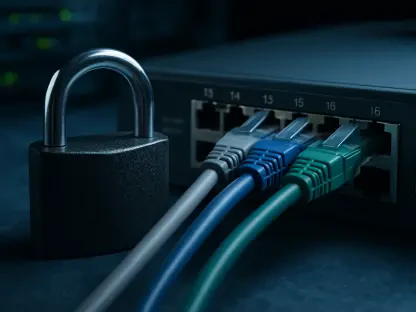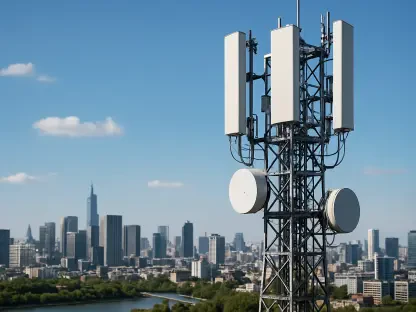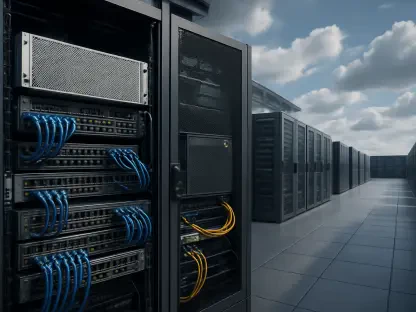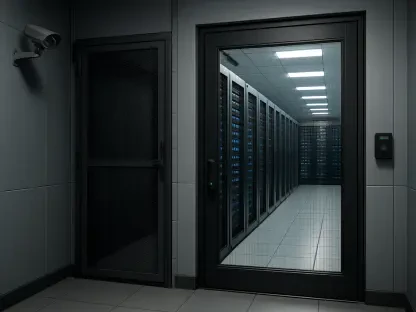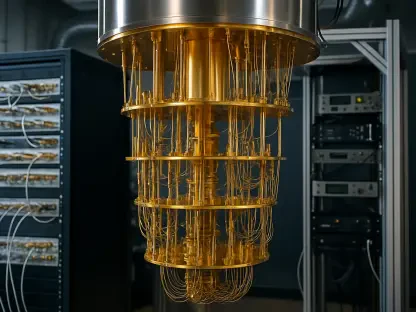Matilda Bailey is a Networking specialist who focuses on the latest technologies and trends in cellular, wireless, and next-gen solutions. We delve into the fascinating world of hollow-core fiber (HCF) technology, as she shares insights on its unique capabilities and transformative potential for the networking sector.
Can you provide an overview of Relativity Networks and the innovative technology you are bringing to market?
Relativity Networks is at the forefront of next-gen hollow-core fiber (HCF) technology, dramatically enhancing the speed and range of data transmission. By utilizing air instead of glass, we’ve developed a solution that moves data nearly 50% faster and farther, meeting the increasing demands of modern data centers and their substantial power requirements.
How does hollow-core fiber (HCF) improve the speed and range of data transmission compared to traditional glass fiber?
Hollow-core fiber leverages air as the medium for light propagation instead of glass. This significantly reduces signal latency and increases transmission speed, allowing data to travel 1.5 times farther without the latency issues that typically disrupt synchronized multi-location operations.
What are the specific benefits of using air instead of glass in fiber optics?
Using air in place of glass minimizes interactions between light and the fiber material, which reduces signal distortion and loss. This results in not only faster data transmission but also greater efficiency, as less power is required to maintain signal integrity over longer distances.
How does HCF technology help reduce latency in data transmission?
Latency reduction in HCF technology stems from the air core, which decreases the refractive index differences that typically slow down light in conventional fibers. This means that data can be transmitted with minimal delay, which is crucial for applications requiring real-time data processing.
Can you explain the significance of extending data center ranges from 60 kilometers to 90 kilometers?
Extending the range from 60 to 90 kilometers offers substantial flexibility for data center placements. It enables organizations to locate their centers closer to diverse power sources, which is increasingly important given the growing energy demands of modern data processing and AI applications.
How does increased geographic flexibility benefit data centers in terms of positioning and power source proximity?
Increased geographic flexibility allows data centers to be positioned strategically, often closer to renewable or stable power sources. This minimizes the risk of power shortages and maximizes operational efficiency, which is essential for maintaining uptime and reducing operational costs.
What makes your proprietary antiresonant fiber designs unique?
Our antiresonant fiber designs feature an advanced optical waveguide with precision-engineered glass walls so thin they are nearly invisible. These structures create mirror-like boundaries that confine light within the air core, facilitating unmatched speed and minimal power loss in data transmission.
Can you elaborate on the mirror-like boundaries within HCF and how they guide light effectively?
The mirror-like boundaries within our hollow-core fibers serve to reflect light, keeping it confined within the air core. This guidance mechanism ensures minimal interaction with the fiber material, thus preserving signal strength and reducing latency across longer distances.
What are the key differences in manufacturing HCF versus traditional solid-core fibers?
Manufacturing HCF involves more complexity as it requires creating several antiresonant structures for optimal light confinement. This differs from traditional solid-core fibers, where the process is more straightforward but doesn’t offer the same level of performance in terms of speed and efficiency.
How does Relativity Networks ensure the optimal confinement of light in HCF?
We utilize advanced simulation software that allows for rapid iteration of new HCF designs. This software, validated through experiments, helps us fine-tune parameters to achieve lower attenuation, reduced dispersion, and superior power handling capabilities.
What role does the advanced simulation software play in the development of HCF technology?
Our advanced simulation software is pivotal in designing and perfecting HCF technology. It facilitates quick design iterations and ensures that our fibers meet the stringent requirements for low attenuation, low dispersion, and high-power handling, essential for diverse high-performance applications.
How did the partnership with Prysmian come about, and what does it involve?
The partnership with Prysmian evolved from our shared vision of revolutionizing data transmission. Together, we co-manufacture HCF-based fiber and cable, leveraging our technology and Prysmian’s extensive manufacturing experience to scale production rapidly.
What were the advantages of developing your technology in collaboration with the College of Optics and Photonics at the University of Central Florida?
Collaborating with the College of Optics and Photonics provided access to cutting-edge research and a wealth of academic expertise, which has been invaluable in refining our HCF technology. This partnership has accelerated the transition from concept to commercial-ready solutions.
What are your long-term goals for Relativity Networks and HCF technology?
Our long-term goals for Relativity Networks focus on reshaping optical network architecture. By enhancing data transmission speed and range, we aim to support the expansion of terabit-scale communications and mitigate the power challenges facing today’s data centers.
How do you plan to scale the production of HCF to meet industry demand?
We plan to scale production through strategic partnerships and advanced manufacturing techniques that facilitate high-volume output. Ensuring a robust supply chain will help meet the rapidly growing demand for our innovative HCF solutions.
What are the main manufacturing challenges associated with HCF cables?
Manufacturing HCF cables is more complex and costlier than producing traditional fibers due to the intricate antiresonant structures required for optimal performance. However, the superior efficiency and performance of HCF justify these complexities and costs.
How do you justify the higher cost of HCF cables to potential customers?
The higher upfront cost of HCF cables is justified by the significant return on investment they offer. Faster data transmission and reduced latency translate to time savings, which are critical for companies already investing billions in their data infrastructure.
What was your inspiration for getting involved in the HCF industry?
My inspiration stemmed from a long-held belief in the potential of next-generation fiber technology. My early research on fiber optics and the pressing needs of the AI-driven economy made it clear that HCF is the key to unlocking the future of high-speed data transmission.
Do you have any advice for our readers?
Stay curious and open to new technologies. The rapid advancements in fiber optics and other networking technologies present exciting opportunities for innovation and growth. Embrace these changes and think critically about how they can be leveraged to meet evolving industry demands.


